|
December 18, 2022
Dear Neighbors and Friends,
I hope that you and your loved ones are doing well, staying healthy, and looking out for your neighbors and friends during this past week.
In this week’s newsletter I’ll bring you behind the curtain of the legislative process as we face an important deadline for introducing bills for the 2023 session. You’ll also find information about the recently-concluded Joint Task Force on Student Success for Underrepresented Students in Higher Education, whose recommendations will be a key focus for the Senate Education Committee this year.
On the COVID front the big COVID increases that we had been seeing the previous couple of weeks have continued to slow down. In fact, the most recent OHSU analysis suggests that we may have reached our peak last week. Wastewater analysis for COVID also shows a leveling off of virus this week.
However, we’re continuing to see big increases in non-COVID hospitalizations and infections, exacerbated by the surge in RSV cases among very young children and the unusually early flu season. Our hospitals remain stressed both by record levels of respiratory infection and an ongoing shortage of workforce. You’ll find more details in the various reports and links below.
As we continue into the holiday season, we find ourselves once again in a time of joyful gatherings and therefore greater risk of infection. If you have yet to receive the latest COVID or flu booster, please do so right away to keep yourselves and your loved ones safer. The Biden administration is again making COVID tests available free of charge—you’ll find a link further down in the newsletter that will tell you how to get them.
Until next week, please do your best to stay happy, healthy and safe. And let me know if you have any questions or thoughts about anything in this week’s newsletter.
This Wednesday Is a Big Day for the Legislature
As I’ve frequently mentioned in my newsletters, the work of the Legislature is directed by a series of deadlines. A key one occurred back in September, when legislators needed to submit their legislative concepts for drafting in legal language by Legislative Counsel. These bill drafts have been coming back to us over the last few months. Those that we want to move forward right away need to be filed by 5 pm this Wednesday. These are what is known as “Pre-Session Filed” and will be “First Read” and made publicly available on the first day of session, January 17.
I should step back for a moment and say that bills can fall into two big categories, “Committee Bills” and “Personal Bills.” Committee bills don’t have individual legislator sponsors but are submitted by committees under the direction of the committee chair. All the pre-session-filed committee bills needed to be approved for introduction last week by the individual committees during our interim committee meetings. You can find them all posted olis.oregonlegislature.gov as Meeting Materials on the various committee websites for last week’s meetings.
Personal Bills will be submitted with the names of individual Chief Sponsors and Co-Sponsors. Those are the ones that are due on Wednesday. By the time the deadline passes, many hundreds (thousands) of Legislative Concepts (LCs) will have been filed for introduction. So, as you can imagine, I’m being bombarded with requests to sign onto different concepts as Chief- or Co-Sponsor, both from colleagues and from advocate supporters. And of course I’m doing the same to them! This involves writing up descriptions, reaching out, and securing their signatures. As you can imagine, it’s a crazy time.
Generally speaking, it’s best to be strategic about these requests and focus them requests on those who are most likely to support them. I try to do that. I try to find sponsors from both parties and both chambers where it’s possible, but that’s not always possible. It’s always possible to add sponsors after the deadline, but we’re limited to members from our own chamber until the bill has passed out of our chamber and has moved to “the other side” of the building—i.e., to the other chamber, House or Senate.
A couple of caveats for you: Many of the bills that are pre-session filed lack precise detail at this point. They are what is known as “Placeholder” bills that will subsequently be fleshed out via amendments. They often appear to be calling for a study of some sort. Generally speaking, if you see a bill at this point that calls for a study, it’s probably a Placeholder; everything related to the study will later be stripped out and replaced by the actual proposed solution to the problem presumably to be studied.
As I mentioned, Pre-Session-Filed bills will be made available on January 17, but legislators and committees can still file bills for a limited period after that. Just because something isn’t part of that first stack of bills doesn’t mean that it’s not going to appear this session.
Starting with the next newsletter, I’ll start laying out some of my priority requests for the next session.
Higher Ed Task Force Releases Report
I’ve written before about the effort to analyze and recalibrate Oregon’s higher education offerings that has been the focus of the Joint Task Force on Student Success for Underrepresented Students in Higher Education. Leading with the voices and perspectives of students themselves (both current students, former students, and those unable to become students, the bipartisan, bicameral legislative members of the task force have spent the last year visiting campuses, hearing from students, and hearing from national experts. The task force’s report to the Legislature was approved last Tuesday at the task force’s final meeting.
You can find it here. You can find it here. It includes a number of findings and recommendations for legislative action during this upcoming session and beyond.
Here are some of its findings:
- Oregon’s economic future requires more and more Oregonians to attain post-secondary certificates and degrees, but fewer are doing so, particularly among students of color and rural Oregonians.
- The cost of attendance at Oregon’s colleges and universities is making it impossible for Oregonians to access and complete higher education, resulting in fewer students at most of our public institutions.
- State support has not been keeping up with the need, resulting in more of the costs being shifted over to tuition.
- The Oregon Opportunity Grant has not kept up with need, so that many students must choose between postponing their studies or taking on increasingly higher levels of debt,
- The challenges are particularly acute for students who are first in their families to try post-secondary education and training, and for those already in the workforce who need to change careers or otherwise upgrade their credentials.
- Tuition is only one part of the challenge, particularly for older students who need to return to school: housing, food, childcare, and textbooks all constitute barriers that need to be overcome.
- Support for students with disabilities, veterans, and currently- and formerly-incarcerated students is inconsistent and needs attention.
I and some of my colleagues are now looking at the recommendations and crafting a series of legislative proposals for the session. They will ultimately be amended into the “placeholder” bills that the Task Force approved last week. Some are budget requests, calling for long-overdue solutions to the various barriers keeping college and university education out of reach for so many Oregonians. Others create task forces that will set us up for better oversight and further work on various challenges.
The Oregonian’s Sami Edge reported on the task force’s final meeting here. Last month she reported she reported on the recent analysis of higher education in Oregon by a national think tank that came to many of the same conclusions.
ON THE COVID FRONT
Weekly Data Report:
OHA now updates and reports COVID metrics once a week, on Wednesdays. Here are the last set of daily results, for this past week from 12/8/22 through 12/14/22.
As you’ll see, this week’s report is again a mixed one, with reported infections and hospitalizations down and ICU hospitalizations and deaths up.
- The 7-day average for new infections went down last week, from 715 the previous week to 616 reported infections per day this last week. The number of new cases is again likely an undercount, as many people are using home tests to determine their infection status but are not reporting those results.
- Average test positivity for the last week has continued to increase, to 10.3% vs. the previous week’s 9.9%. Again, this number skews high because it likely reflects a higher proportion of people showing COVID symptoms (and thus reporting or going in for a test, rather than self-testing and never reporting).
- On Wednesday there were 316 COVID-19-related hospitalizations statewide, a continued decline from 322 last Wednesday. Hospitalizations are now our best indicator of disease spread. Again, however, most of these hospitalizations are not in and of themselves due to COVID—more than half are those who tested positive after having been admitted for other reasons.
- The number of COVID patients in Oregon’s ICUs on Wednesday went back up again, from 30 to 36. These are the most serious COVID infections.
- There were 43 COVID-19-related deaths reported during the last week, up from the previous week’s 28. Again, some of every week’s reported deaths actually occurred in earlier weeks but were just reported to the state. The newsletter’s final graph shows when the deaths actually occurred, and you’ll see that the number of COVID deaths each day continues to remain low.
Weekly County Report: Again, No Counties at High Risk
The CDC assigns risk levels based on a combination of the number of new COVID cases and the number of people in hospital for COVID.
According to the CDC Daily Counter (updated each Thursday), all Oregon counties are at either Low or Medium Risk, as has been the case for nine out of the last ten weeks.
Ten Oregon counties (down from eleven last week) have reported infection rates that place them in the Medium Risk category: Baker, Coos, Curry, Jackson, Josephine, Klamath, Lake, Union, Wallowa, and Wheeler.
The remaining 25 Oregon counties (down from 28 last week) are at Low Risk: Benton, Clackamas, Clatsop, Columbia, Crook, Deschutes, Grant, Harney, Gilliam, Hood River, Klamath, Lake, Lincoln, Linn, Malheur, Marion, Morrow, Multnomah, Polk, Sherman, Tillamook, Umatilla, Wasco, Washington, and Yamhill,
We can also track the cases, deaths, and test positivity rates for each county at this website.
The three Portland-area counties remain high overall this week. Washington County is again the region’s highest, taking a big leap to 19.6% from last week’s 11.9%. Clackamas County is 11.8%, up from last week’s 10.7%. Only Multnomah County saw a decrease, down to (a still high) 9.2% from last week’s 9.6%.
Remember, though, that these are all based on reported test results, and so are more likely to be a little higher than the total percent positivity (i.e., if one were to include all tests taken).
This Week’s Wastewater Monitoring Report: More of the Same
With testing reports giving us just a fraction of infections out there, wastewater monitoring has become a more reliable indicator of the amount of virus in cities around the state. That report is updated each week.
This week’s report is largely the same as last week. As you’ll see, 94% (up from 81%) of the cities showed no change. Only 3% of the cities showed an increase or sustained increase last week (down from 18%). Three percent of cities (same as last week) showed decreased or sustained decrease in viral load from the previous week.
Only Tillamook showed sustained increases last week.
OHSU Forecast Again Shows Increases in COVID and RSV
Another OHSU Forecast Report was released on December 8. Its observations are a week behind. (I had anticipated that its release would be this week so didn’t include it in the last newsletter.)
It uses data provided by OHA and others that project how fast the virus may spread in the population and provides projections on possible outcomes, including infection rates and impacts on hospital capacity. The lead author is Dr. Peter Graven, Director of OHSU’s Office of Advanced Analytics.
This week’s forecast is similar to the last one. It continues to show continued increases in hospital demand over the next couple of weeks, followed by gradual declines.
Here are some details:
- As of Nov. 30, 363 people were in the hospital with COVID. That's up from 230 on Nov. 16. [That number has gone down this week, but is still higher than it was mid-November.]
- The number of people in the hospital with flu has more than tripled in Oregon in the two weeks leading to Dec. 7.
- The number of people in the hospital with RSV is at record levels in Oregon.
- COVID cases were expected to peak at 408 on Dec. 12.
- Oregon should be at or near a peak for RSV. Cases are expected to drop slowly, remaining high for the next two to three weeks.
- COVID levels in wastewater data have increased over the previous month.
- People with COVID symptoms make up 5.5% of emergency department visits. The number of people seeking emergency care for any reason is at the highest level since March 2020.
- Statewide, the number of available beds is 260. This is the lowest number since January 6, 2022.
- The amount of boarding, or patients in the Emergency Department waiting to find a bed for admission to the hospital, is at its highest levels. The rate has increased significantly in the last 2 weeks.
- The percentage of people testing positive for COVID has increased from 7.2% two weeks earlier to 10.6%.
- As of Nov. 30, 6% of the patients in Oregon's ICU beds had COVID.
- As of Dec. 1, five children were in the hospital with COVID. That’s the same as in the last report.
- RSV cases are expected to remain significant over the next three weeks.
- As of Nov. 27, the rate of positive COVID tests had increased to 10.6% but cases have appeared to peak. Cases remain at much lower levels than was the case in earlier waves.
- The number of COVID deaths per day is forecast to remain relatively low.
COVID Q & A from OHA Doctors (from OHA weekly newsletter)
Dr. Paul Cieslak, OHA senior health advisor and medical director, Communicable Diseases and Immunizations, and David Farrer, OHA toxicologist, answered this week’s questions.
Q: My family and I recently came down with a nasty cold bug. My physician assured me this was expected this year because we were so careful during the last two years. Masking, disinfecting and social distancing had worked so well that our immune systems would need to redevelop our defenses. Will masking again make next winter worse? – Jared, Pleasant Hill
A: “The relative decrease of viral transmission over the past couple of years might have left us a bit more susceptible to common infections from the flu or RSV this season – but probably not by much. Unfortunately, the immunity we get from such infections tends to be short-lived, so even if we’ve been infected by the flu or a common cold virus, we’re likely to be susceptible again the next year. And as you know, viruses mutate. This is why, for example, flu vaccination is recommended annually with an updated vaccine formula.
“Because respiratory viruses tend to spread more during these winter months as we gather indoors, it’s OK to wear masks and take precautions like disinfecting high-touch surfaces and avoiding indoor crowds without hurting your immune response to viruses the next year.”
Q: Could you clear up the question of whether the disinfectant in wipes does or does not expire? Should we expect it might last beyond one year? – Lynn, Eugene
A: “Disinfectant wipes do expire. When they expire, it is not the same as when food expires. They do not become harmful or dangerous, but they do become gradually less effective at killing germs as the active ingredients in them degrade over time. Expired wipes will probably look and smell just the same as fresh ones.
“Most experts and manufacturers agree that wipes should be considered expired one year after their manufacture date. Some manufacturers may print a “Best if used by” date on the product container somewhere. If they do, then go by that. If not, look for a manufacture date (it will be printed somewhere on the container, but probably not on the printed wrapper or sticker label part of the container). This website has some good tips on how to find the manufacture date.
“One other thing I like to remind folks is that disinfectant wipes are not the same as other types of wipes, like baby wipes. The National Pesticide Information Center (NPIC), located at Oregon State University, has a great infographic that explains the difference. The information above applies to disinfectant wipes designed for disinfecting surfaces (not hands or skin).”
Additional COVID Updates and Links
- The Biden administration is again making free COVID tests available. Here's how to get them.
- Here’s reporting from Axios suggesting that our our historically bad flu season may be peaking.
- But CNN reports that pandemic “vaccine fatigue” may be reducing the number of people getting flu vaccines, the result of which will be continued hospitalizations and deaths.
- A CDC study finds that Long COVID may have been responsible for the deaths of at least 3,500 Americans, with more coming.
- The elderly are again becoming a growing proportion of COVID deaths, than half of all nursing home residents up to date on their COVID boosters.
- And here’s similar reporting from CNBC.
- Here’s an article from the New York Times on the winter respiratory infections that are on the rise at record rates. (This article may not be accessible to those without a subscription to the )
- The Times also provides answers to the question of whether you have flu, RSV, or COVID. (This article may not be accessible to those without a subscription to the )
- The Commonwealth Fund reports on how two years of COVID vaccines have prevented millions of hospitalizations and deaths.
- Here’s an interesting report posted on the website of the National Bureau of Economic Research that suggests that “"Long Social Distancing"—the inclination among workers and potential workers to maintain social distancing--and its effects will persist for many months or years.
- A CDC study suggests that the new bivalent boosters have already cut the risk of hospitalization in half.
- However, as we see in reporting from the NY Times, these conclusions may require some asterisks. (This article may not be accessible to those without a subscription to the NY Times.)
- A recent study suggests that a growing number of parents (at least a third now) are now opposed to vaccine requirements of any kind for their children to attend public school. (This article may not be accessible to those without a subscription to the NY Times.)
- With many more Americans dying of COVID in red states than blue states, we may have an answer to the question, Can Politics Kill You?
- A new report from a House subcommittee lays out a number of failures in our initial response to the pandemic. a number of failures in our initial response to the pandemics, However, it has generated criticism for being exclusively focused on the Trump year.
- The number of U.S. deaths went down this year—but they’re still higher than they were before the pandemic began.
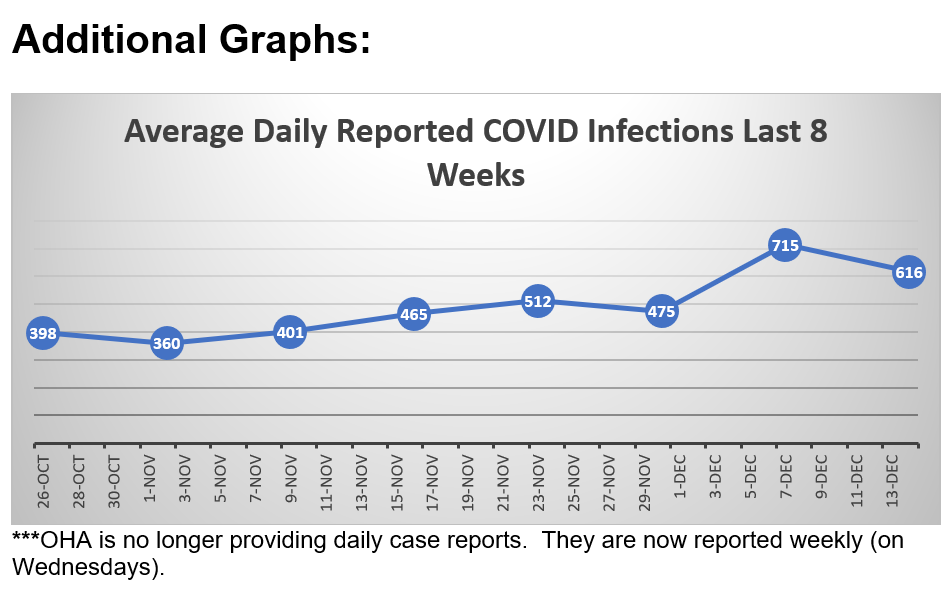

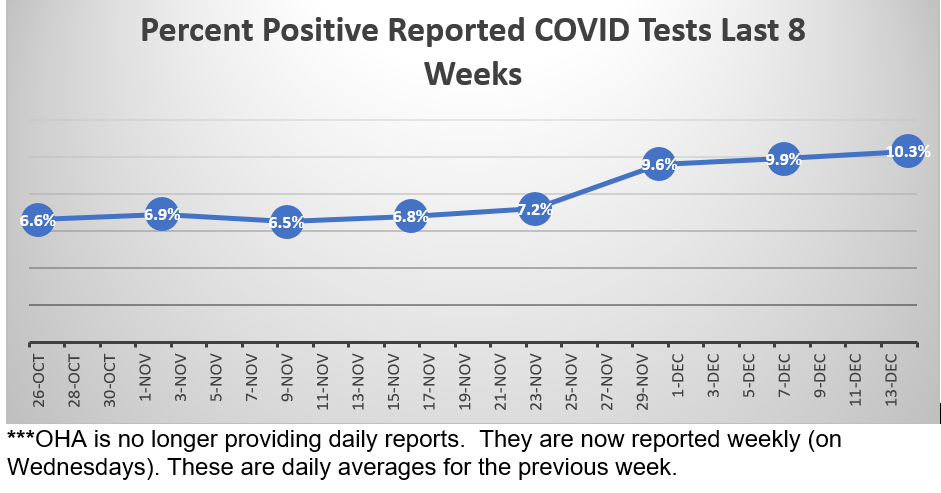
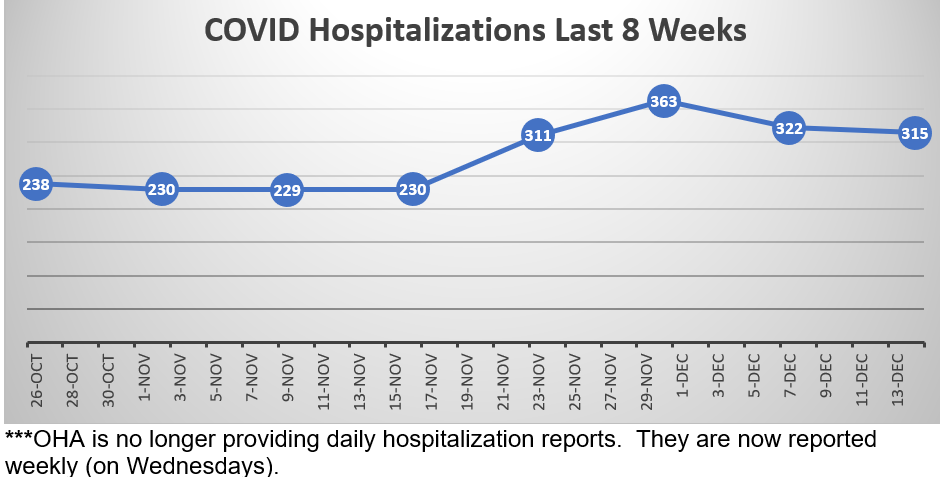
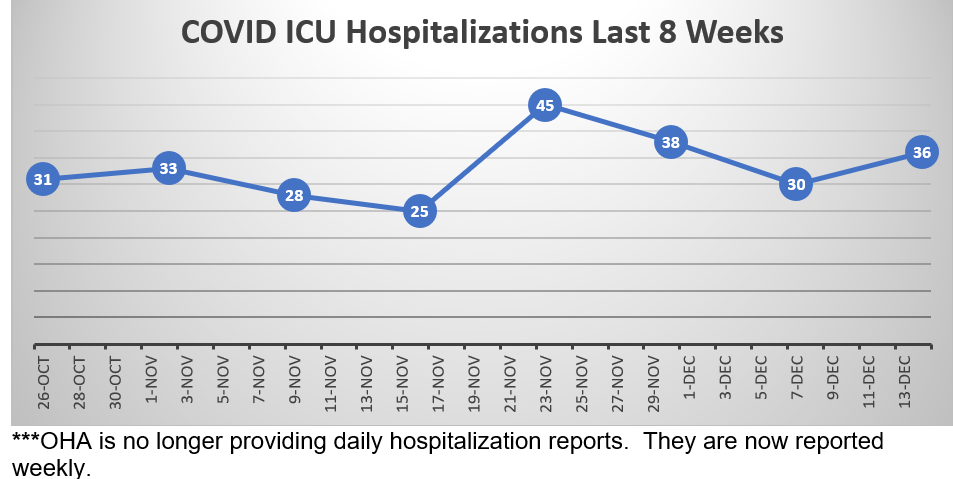
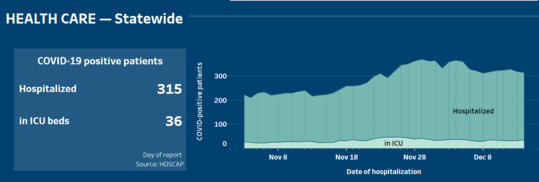

 
Here again are some COVID resources that you will find useful:
If the above links are not providing you with answers to your questions or directing you to the help that you need, please consider me and my office to be a resource. We’ll do our best to assist you or steer you in the right direction.
Want to See Past Newsletters?
If there was COVID-related information in a past newsletter that you want to go back to, but find you’ve deleted it, you can always go to my legislative website (senatordembrow.com), click on “News and Information,” and you’ll find them all there. Also, if someone forwarded you this newsletter and you’d like to get it directly, you can sign up for it there.
Best,
 Senator Michael Dembrow
District 23
email: Sen.MichaelDembrow@oregonlegislature.gov
web: www.senatordembrow.com
mail: 900 Court St NE, S-407, Salem, OR, 97301
|